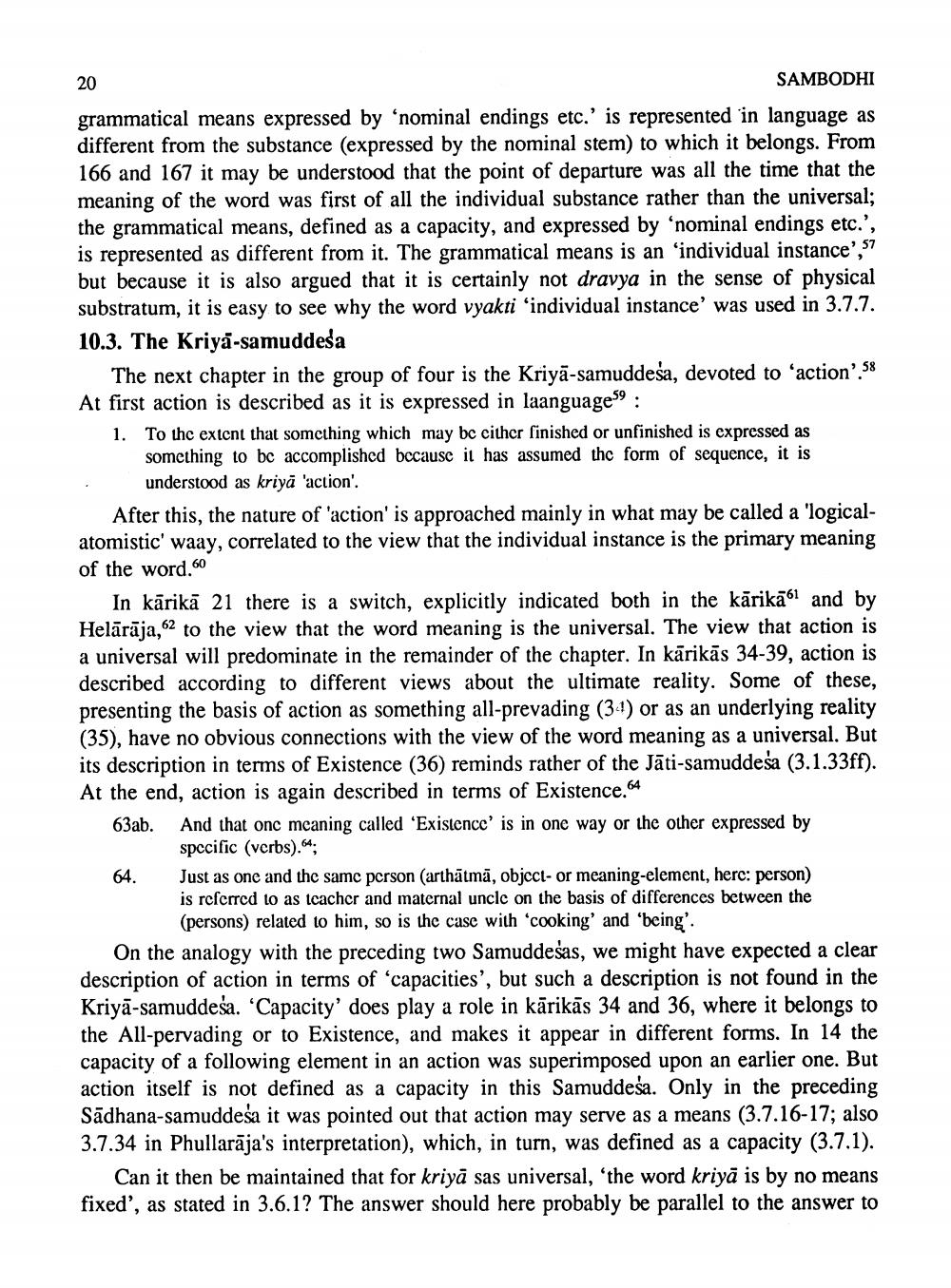________________
20
SAMBODHI
grammatical means expressed by ‘nominal endings etc.' is represented in language as different from the substance (expressed by the nominal stem) to which it belongs. From 166 and 167 it may be understood that the point of departure was all the time that the meaning of the word was first of all the individual substance rather than the universal; the grammatical means, defined as a capacity, and expressed by 'nominal endings etc.', is represented as different from it. The grammatical means is an 'individual instance', S7 but because it is also argued that it is certainly not dravya in the sense of physical substratum, it is easy to see why the word vyakti ‘individual instance' was used in 3.7.7. 10.3. The Kriya-samuddesa
The next chapter in the group of four is the Kriya-samuddesa, devoted to "action'.58 At first action is described as it is expressed in laanguages : 1. To the extent that something which may be either finished or unfinished is expressed as
something to be accomplished because it has assumed the form of sequence, it is
understood as kriyā 'action'. After this, the nature of 'action' is approached mainly in what may be called a 'logicalatomistic' waay, correlated to the view that the individual instance is the primary meaning of the word.60
In kārikā 21 there is a switch, explicitly indicated both in the kārikā61 and by Helārāja,62 to the view that the word meaning is the universal. The view that action is a universal will predominate in the remainder of the chapter. In karikās 34-39, action is described according to different views about the ultimate reality. Some of these, presenting the basis of action as something all-prevading (34) or as an underlying reality (35), have no obvious connections with the view of the word meaning as a universal. But its description in terms of Existence (36) reminds rather of the Jāti-samuddeša (3.1.33ff). At the end, action is again described in terms of Existence.64 63ab. And that onc meaning called 'Existence' is in one way or the other expressed by
specific (verbs).64; Just as one and the same person (arthātmā, object- or meaning-element, here: person) is referred to as tcacher and maternal uncle on the basis of differences between the
(persons) related to him, so is the case with 'cooking' and 'being? On the analogy with the preceding two Samuddesas, we might have expected a clear description of action in terms of 'capacities', but such a description is not found in the Kriyā-samuddeša. 'Capacity' does play a role in kārikās 34 and 36, where it belongs to the All-pervading or to Existence, and makes it appear in different forms. In 14 the capacity of a following element in an action was superimposed upon an earlier one. But action itself is not defined as a capacity in this Samuddeša. Only in the preceding Sadhana-samuddesa it was pointed out that action may serve as a means (3.7.16-17; also 3.7.34 in Phullarāja's interpretation), which, in turn, was defined as a capacity (3.7.1).
Can it then be maintained that for kriyā sas universal, 'the word kriyā is by no means fixed', as stated in 3.6.1? The answer should here probably be parallel to the answer to




